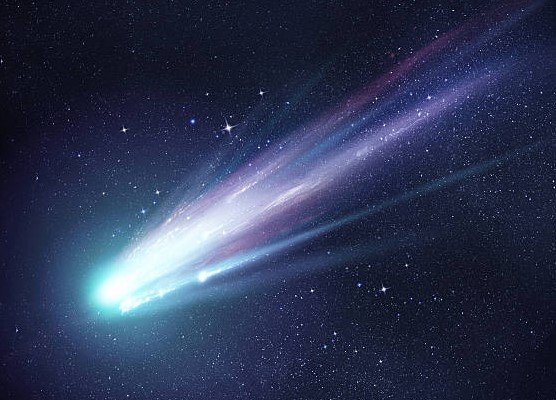Harvard astrophysicist Avi Loeb has accused NASA of withholding key images of the interstellar comet 3I/ATLAS, a massive object the size of Manhattan speeding through our solar system. In a recent podcast appearance, Loeb suggested the comet might not be natural and could even be alien technology, sparking widespread debate as it makes its closest approach to the Sun on October 30, 2025.
What Is 3I/ATLAS and Why the Buzz?
The interstellar comet 3I/ATLAS was first spotted in July 2025, marking it as the third confirmed object from outside our solar system. Unlike typical comets, this giant measures up to 46 kilometers across, weighs over 33 billion tons, and travels at a blistering 193,000 miles per hour.
Experts say its path is unusual, with a retrograde orbit that aligns closely with planetary positions, including a recent flyby of Mars on October 25, 2025, just 18 million miles away. This has fueled speculation among scientists about its origins and behavior.

Social media and astronomy forums are abuzz, with users sharing theories ranging from natural cosmic oddity to something more extraordinary. Recent data shows it glowing green and possibly shedding material in ways that defy standard comet models.
Avi Loeb’s Bold Accusations Against NASA
Avi Loeb, a respected Harvard professor known for his work on extraterrestrial possibilities, went public with strong claims during an interview on The Joe Rogan Experience. He stated that NASA captured a high-resolution image of 3I/ATLAS using the HiRISE camera on the Mars Reconnaissance Orbiter when the comet passed near Mars on October 2, 2025.
Loeb reached out to the camera’s lead investigator for access but got no reply. He called this “terrestrial stupidity” and hinted it might hide evidence that contradicts NASA’s view of the object as a simple comet.
In the podcast, Loeb pointed out that the unreleased image allegedly shows no cometary tail, a key feature for natural comets. This detail, if true, could challenge official explanations and open doors to alternative theories.
Public reaction has been swift, with online discussions amplifying Loeb’s frustration. He urged for transparency, arguing that withholding data stifles scientific progress.
Experts in the field note that such delays in data release are not uncommon due to processing times, but Loeb’s persistence has drawn attention to potential gaps in NASA’s communication.
Could 3I/ATLAS Be Alien Technology?
Loeb has speculated that 3I/ATLAS might not be a natural comet at all, but perhaps an artificial object from another civilization. He bases this on several anomalies observed in recent months.
For instance, the comet’s trajectory seems too precise, almost as if steered, and it lacks the expected tail while glowing on its own. Loeb even suggested it could be a “mothership” releasing smaller probes toward Earth.
Here are seven key clues that have scientists debating its possible extraterrestrial origins:
- Unusual chemical composition with elements not typical for comets.
- Retrograde path that defies common interstellar trajectories.
- Massive size, over 100,000 times heavier than previous interstellar visitor Oumuamua.
- Green glow and material shedding without a visible tail.
- Alignment with Earth’s orbital plane, suggesting intentional navigation.
- Possible slowdown, as if braking to stay in our solar system longer.
- Nuclear-powered behavior, with no standard comet jets.
These points come from Loeb’s analysis and align with data from telescopes like Hubble. While many astronomers dismiss the alien theory as speculative, Loeb argues we should investigate boldly to avoid missing breakthroughs.
Recent events, such as the 2017 Oumuamua discovery, show how interstellar objects can surprise us. Loeb compares 3I/ATLAS to that case, where he also proposed alien origins.
NASA’s Stance and Official Response
NASA maintains that 3I/ATLAS is a natural comet and poses no threat to Earth. The agency has released some images from the Hubble Space Telescope, showing the object with an atypical jet.
Officials emphasize that studying it could improve our understanding of hazardous space rocks. They have not directly addressed Loeb’s withholding claims but stated that all data will be shared in due time.
In a broader context, NASA faces growing pressure for openness amid rising interest in UFOs and interstellar phenomena, especially after congressional hearings on unidentified aerial phenomena in 2024.
What This Means for Science and the Public
The controversy highlights tensions between independent researchers and government agencies in space exploration. If Loeb’s claims hold, it could push for faster data sharing and more collaborative efforts.
For the public, this adds excitement to astronomy, reminding us that our solar system might host visitors from afar. As 3I/ATLAS swings by the Sun today, telescopes worldwide are trained on it for new insights.
Looking ahead, missions to study similar objects could become priorities, building on successes like the James Webb Space Telescope’s recent discoveries.
| Key Facts About 3I/ATLAS | Details |
|---|---|
| Discovery Date | July 1, 2025 |
| Size | Up to 46 km (Manhattan-sized) |
| Mass | Over 33 billion tons |
| Speed | 193,000 mph |
| Closest to Mars | October 2, 2025 (30 million km) |
| Closest to Sun | October 30, 2025 |
| Unusual Features | No tail, green glow, possible slowdown |
This table summarizes the comet’s profile based on the latest observations.
The debate over 3I/ATLAS shows how science thrives on curiosity and scrutiny. Share your thoughts in the comments below or spread the word on social media to keep the conversation going.
